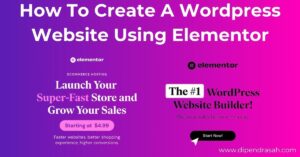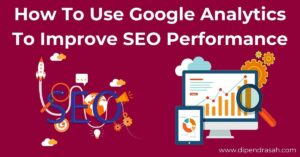The Blogger’s Journey: What You Need to Get Started
Starting a blog can be an exciting adventure, but it requires careful planning, dedication, and a strategic approach. Whether you want to share your passions, establish authority in a field, or even monetize your blog, understanding the essential steps and best practices is crucial. In this comprehensive guide, we’ll walk you through every stage of the blogging journey, from understanding the commitment involved to growing your audience and achieving your blogging goals.
Understanding the Commitment to Blogging
The Time and Effort Involved
Blogging is more than just writing posts. It involves a significant commitment of time and effort. Here’s what to consider:
- Regular Content Creation: Consistent posting is key to maintaining and growing your audience. This means dedicating time to research, write, edit, and publish new content regularly.
- Engagement with Readers: Building a loyal audience requires engaging with your readers through comments, social media, and email newsletters.
- Ongoing Learning: The digital landscape is constantly evolving, so staying updated with new trends, tools, and best practices is essential.
- Technical Maintenance: Managing a blog involves dealing with technical aspects such as website updates, backups, and troubleshooting.
Setting Clear Objectives for Your Blog
Before you start, it’s important to define what you want to achieve with your blog. Setting clear objectives will guide your strategy and keep you focused. Consider the following:
- Purpose: What is the main goal of your blog? It could be sharing personal experiences, educating others, building a brand, or generating income.
- Goals: Set specific, measurable, achievable, relevant, and time-bound (SMART) goals. For example, “Grow my blog’s traffic to 10,000 monthly visitors within six months.”
- Metrics for Success: Decide how you’ll measure success. This could be through traffic numbers, social media engagement, email subscribers, or revenue.
Identifying Your Niche and Target Audience
Finding Your Niche
Choosing a niche is critical for defining your blog’s focus and attracting a dedicated audience. Here’s how to identify your niche:
- Passion and Expertise: Choose a topic you are passionate about and knowledgeable in. This will make content creation more enjoyable and authentic.
- Market Demand: Research if there is a demand for your niche. Use tools like Google Trends, keyword research tools, and competitor analysis to gauge interest.
- Unique Angle: Identify what sets your blog apart. This could be a unique perspective, a specific sub-niche, or a different content format.
Identifying Your Target Audience
Understanding your target audience helps tailor your content to their needs and preferences:
- Demographics: Determine the age, gender, location, and other demographic factors of your ideal readers.
- Interests and Pain Points: Identify what interests your audience and what problems they need solving.
- Behavior: Analyze where your audience spends their time online, their preferred content formats, and how they engage with content.
The Importance of Authenticity and Originality
Building Trust and Credibility
Authenticity and originality are crucial for building trust and credibility with your audience:
- Unique Voice: Develop a distinctive voice and style that reflects your personality and values.
- Original Content: Offer fresh perspectives and original insights. Avoid copying content from other sources.
- Transparency: Be honest and transparent with your readers, especially when discussing sponsored content or affiliate links.
Engaging Authentically
- Personal Stories: Share personal experiences and stories to connect with your audience on a deeper level.
- Genuine Interaction: Engage with your readers genuinely, whether through comments, social media, or email.
- Consistency: Maintain consistency in your content and communication to build a reliable and trustworthy brand.
Choosing Your Platform: Where to Build Your Blog
Evaluating the Top Blogging Platforms
There are several blogging platforms to choose from, each with its own set of features:
- WordPress.org: A self-hosted platform offering full control and customization. Ideal for serious bloggers who want to build a unique site.
- WordPress.com: A hosted platform with various plans. It’s user-friendly but offers less control compared to WordPress.org.
- Blogger: A free, easy-to-use platform owned by Google. It’s suitable for beginners but lacks advanced features.
- Medium: A platform focused on writing and publishing. Great for reaching an existing audience but limited in customization.
- Wix and Squarespace: Website builders with blogging capabilities. They offer drag-and-drop design and ease of use but may have limitations in terms of flexibility and scalability.
Custom Domain Names and Their Importance for Branding
A custom domain name enhances your blog’s professionalism and branding. Here’s why it’s important:
- Brand Identity: A custom domain reflects your brand and makes your blog easier to remember.
- Credibility: A personalized domain name enhances credibility and trustworthiness.
- Control: Owning your domain gives you full control over your online presence.
Self-Hosted vs Hosted Options – What’s Best for You?
Choosing between self-hosted and hosted options depends on your needs and technical skills:
- Self-Hosted: Offers greater control and customization. Requires purchasing hosting and managing your website, but gives you full ownership and flexibility.
- Hosted: Easier to set up and maintain. Ideal for beginners or those who prefer a hassle-free experience, but with less control over customization.
Comparing Costs and Features to Fit Your Needs
Evaluate the costs and features of different platforms to find the best fit for your needs:
- Budget: Consider your budget for hosting, domain registration, and any additional tools or plugins.
- Features: Assess the features you need, such as design options, SEO tools, and analytics.
- Scalability: Ensure the platform can grow with your blog, handling increased traffic and content.
Designing Your Blog: Crafting a User-Friendly Experience
Essentials of User-Friendly Design
A well-designed blog enhances user experience and encourages engagement:
- Navigation: Create an intuitive navigation menu that makes it easy for users to find content.
- Readability: Use legible fonts, appropriate font sizes, and sufficient white space to improve readability.
- Load Time: Optimize images and use caching to ensure fast loading times.
Creating an Accessible and Inclusive Platform
Accessibility ensures that everyone, including people with disabilities, can use your blog:
- Alt Text: Provide descriptive alt text for images.
- Keyboard Navigation: Ensure your site is navigable using a keyboard.
- Color Contrast: Use high-contrast colors for text and background to improve readability.
Balancing Aesthetics with Functionality
Design should balance aesthetics with functionality:
- Visual Appeal: Choose a design that reflects your brand and is visually appealing.
- Functionality: Ensure that design elements enhance usability and do not hinder performance.
The Role of Mobile Responsiveness in User Engagement
Mobile responsiveness is crucial as more users access blogs from mobile devices:
- Responsive Design: Use responsive design techniques to ensure your blog looks good on all devices.
- Testing: Regularly test your blog on different screen sizes and devices.
- User Experience: Optimize navigation and readability for mobile users.
Content is King: Developing a Content Strategy That Resonates
Building a Content Calendar for Consistency
A content calendar helps maintain consistency and organization:
- Planning: Schedule content topics and publication dates.
- Frequency: Determine how often you’ll publish new content.
- Deadlines: Set deadlines for writing, editing, and publishing.
Researching Topics That Speak to Your Audience
Understanding what topics resonate with your audience is key:
- Keyword Research: Use tools like Google Keyword Planner and SEMrush to find relevant keywords.
- Audience Feedback: Gather feedback from your readers to identify topics of interest.
- Competitor Analysis: Analyze competitors’ content to discover gaps and opportunities.
Incorporating Multimedia Elements for Enhanced Interaction
Multimedia elements can make your content more engaging:
- Images: Use high-quality, relevant images to complement your content.
- Videos: Create videos to explain complex topics or provide additional value.
- Infographics: Use infographics to present data and information visually.
The Significance of Quality Over Quantity in Content Creation
Focusing on quality rather than quantity ensures that your content is valuable and effective:
- In-Depth Posts: Create comprehensive and well-researched posts that provide value.
- Engaging Writing: Write in a clear, engaging, and conversational style.
- Editing: Edit and proofread your content to ensure it is error-free and polished.
Growing Your Audience: SEO and Beyond
Fundamentals of SEO for Bloggers
SEO is essential for driving organic traffic to your blog:
- Keyword Optimization: Incorporate relevant keywords naturally into your content.
- On-Page SEO: Optimize meta titles, descriptions, headers, and URL structures.
- Technical SEO: Ensure your blog’s technical aspects, such as site speed and mobile-friendliness, are optimized.
- Link Building: Build high-quality backlinks to increase your blog’s authority and visibility.
Using Social Media to Expand Your Reach
Social media is a powerful tool for promoting your blog:
- Platform Selection: Choose social media platforms that align with your audience.
- Content Sharing: Share your blog posts and engage with your audience on social media.
- Networking: Connect with other bloggers and influencers to expand your reach.
Engaging with Your Community Through Comments and Collaborations
Building relationships with your readers and peers is crucial:
- Respond to Comments: Engage with readers by responding to comments on your blog.
- Collaborate with Others: Partner with other bloggers or influencers for guest posts or joint projects.
- Host Giveaways or Contests: Encourage interaction and increase visibility through giveaways or contests.
Continuous Learning and Adapting to Changes in the Digital Landscape
The digital landscape is ever-evolving, so staying current is important:
- Industry News: Follow industry news and trends to stay informed.
- Skill Development: Continuously improve your skills through online courses and resources.
- Adaptation: Be willing to adapt your strategies based on new information and changes in the digital world.
Conclusion
Embarking on the blogging journey requires dedication, strategic planning, and a willingness to learn and adapt. By understanding the commitment involved, setting clear objectives, choosing the right platform, designing a user-friendly blog, developing a solid content strategy, and leveraging SEO and social media, you can build a successful and impactful blog. Embrace the process, stay authentic, and enjoy the creative and rewarding journey of blogging. Whether you’re sharing your passions or building a brand, these steps will guide you toward achieving your blogging goals and connecting with your audience.



